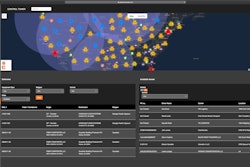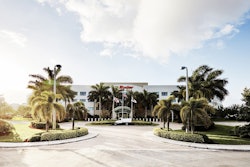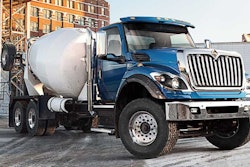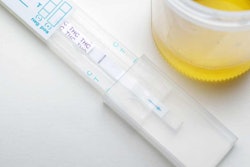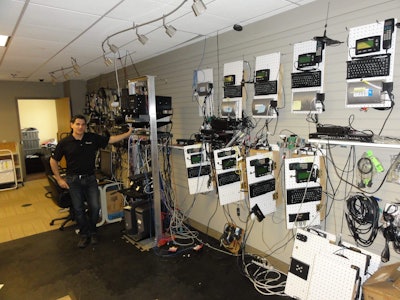 Fleets using legacy g3 hardware from PeopleNet had to revert to paper logs due to a connectivity issue on Jan. 1
Fleets using legacy g3 hardware from PeopleNet had to revert to paper logs due to a connectivity issue on Jan. 1On January 1, Trimble Transportation Mobility (formerly PeopleNet) began to observe a computer software rebooting issue in a subset of its customer base that utilizes the legacy PeopleNet g3 telematics on-board device.
Trimble acquired PeopleNet in 2011 and rebranded it as Trimble Transportation Mobility in 2018.
“Once we identified the root cause, we quickly worked to communicate and provide options to these customers to address this issue. A software update was made available to customers on the evening of January 1,” said Lea Ann McNabb, a spokesman for Trimble.
“We are actively working with impacted customers to implement the update and restore the connection to the devices in a timely and complete manner. Impacted drivers have switched to using paper logs as an alternative to track hours of service until their g3 on-board device has been updated. Driver connectivity is our top priority and we remain focused on ensuring a seamless user experience for all of our customers.”
Heniff Transportation, a liquid bulk carrier (CCJ Top 250, No. 104) and Trimble Mobility customer, told CCJ it did not experience any connectivity issues because it does not use any legacy g3 hardware in its fleet.
The outage appears to be similar to the “GPS rollover event” that caused connectivity issues for legacy devices by Omnitracs in early November 2019, as reported by CCJ. The connectivity problems caused Omnitracs’ legacy MCP 200, MCP 110 and MCP 50 devices to go offline, making time and location data unavailable.
PeopleNet launched the g3 platform in 2004 to utilize 2G and 3G wireless networks. In 2014, the company announced the replacement for the g3 base unit, the Mobile Gateway.
The Mobile Gateway connects the truck to Trimble Mobility’s data center and the Internet using 4G LTE cellular networks and Wi-Fi when available. It also uses 3G and 2G cellular networks as failover to maintain wide-area coverage.
When the ELD mandate was announced in 2015, Trimble Mobility customers and fleets throughout the industry began upgrading devices in their trucks on an accelerated scale. The sunset of 3G CDMA wireless networks also became a factor starting in 2018.
Since March 2017, Trimble has been offering 4G LTE platforms — the PeopleNet Mobile Gateway (PMG) and the PeopleNet Connected Gateway (PCG). Trimble’s PMG devices are installed at the factory in Peterbilt and Kenworth trucks to power the OEMs’ remote diagnostics services.
In March 2019, John Binder, director of wireless operations for Trimble, told CCJ that Trimble Transportation Mobility had about 250,000 devices in the field with some exposure to sunsetting CDMA and GSM networks. Trimble has a multi-network operator architecture that enables its devices to select and use any CDMA or GSM carrier that is available.
Trimble didn’t say how many of the 250,000 devices that are not 4G LTE enabled were the g3 units that had the aforementioned connection issue on Jan. 1 2020.
In November 2019, Trimble announced its latest hardware, the Trimble Duo. The Android-powered device combines an in-cab display with a 4G-LTE powered vehicle gateway. The Trimble Duo connects and mounts directly to a truck’s dashboard, eliminating the need to run cables through the headliner or to uninstall older onboard equipment.



